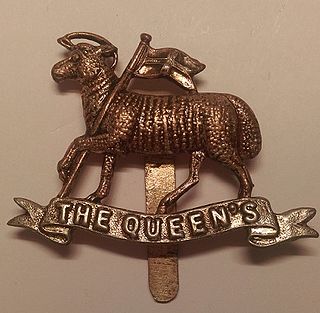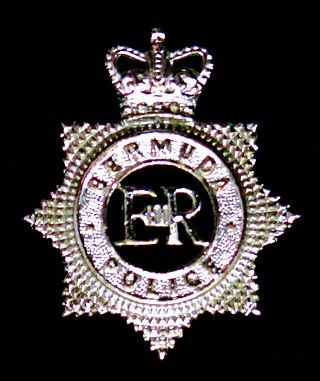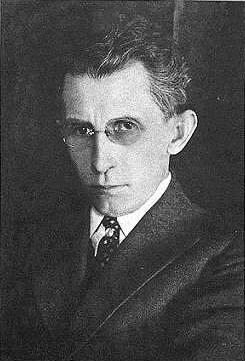
Bermuda is a British Overseas Territory in the North Atlantic Ocean. The closest land outside the territory is in the American state of North Carolina, about 1,035 km (643 mi) to the west-northwest.
This is a demographyof the population ofBermuda including population density, ethnicity, education level, health of the populace, economic status, religious affiliations and other aspects of the population, including changes in the demographic make-up of Bermuda over the centuries of its permanent settlement.

The City of Hamilton, in Pembroke Parish, is the territorial capital of the British Overseas Territory of Bermuda. It is the territory's financial centre and a port and tourist destination. Its population of 854 (2016) is one of the smallest of any capital city.

Pearl Fay White was an American stage and film actress. She began her career on the stage at age 6, and later moved on to silent films appearing in a number of popular serials.

The Hamilton Princess & Beach Club, A Fairmont Managed Hotel is one of the grandest and most famous hotels in Bermuda, located in Pembroke Parish just outside the City of Hamilton. It also happens to be the oldest hotel in the Fairmont chains. One of the largest in Bermuda, it has over 400 rooms. It is one of two Fairmont Hotels on the island, the second being the Fairmont Southampton, which was originally opened as the Southampton Princess.

The governor of Bermuda is the representative of the British monarch in the British overseas territory of Bermuda.

The Queen's Royal Regiment (West Surrey) was a line infantry regiment of the English and later the British Army from 1661 to 1959. It was the senior English line infantry regiment of the British Army, behind only the Royal Scots in the British Army line infantry order of precedence.

The Bermuda Police Service is the law enforcement agency of the British Overseas Territory and former Imperial fortress of Bermuda. It is responsible for policing the entire archipelago, including incorporated municipalities, and the surrounding waters. It is part of, and entirely funded by, the Government of Bermuda. Like the Royal Bermuda Regiment, it is under the nominal control of the territory's Governor and Commander in Chief, although, for day-to-day purposes, control is delegated to a minister of the local government. It was created in 1879, as Bermuda's first professional police service. In organisation, operation, and dress, it was created and has developed in line with the patterns established by British Isles police services, such as the City of Glasgow Police, and the Metropolitan Police Service.

The Bermuda Volunteer Rifle Corps (BVRC) was created in 1894 as a reserve for the Regular Army infantry component of the Bermuda Garrison. Renamed the Bermuda Rifles in 1951, it was amalgamated into the Bermuda Regiment in 1965.
Henry Jennings was an English privateer-turned-pirate. Jennings's first recorded act of piracy took place in early 1716 when, with three vessels and 150–300 men, Jennings's fleet ambushed the Spanish salvage camp from the 1715 Treasure Fleet. After the Florida raid, Jennings and his crew also linked up with Benjamin Hornigold's "three sets of pirates" from New Providence Island.
Rebecca Jane Middleton was a Canadian teenager who was raped and murdered while on vacation in Bermuda. She was stabbed over 30 times, although alive when found, she bled to death before paramedics arrived.

The Edison Manufacturing Company, originally registered as under the name of the United Edison Manufacturing Company and often known as simply the Edison Company, was organized by scientist / inventor and entrepreneur, Thomas A. Edison (1847-1931), and incorporated in New York City in May 1889. It succeeded the earlier Edison United Manufacturing Company, founded in 1886 as a sales agency for the old Edison Lamp Company, Edison Machine Works, and Bergmann & Company, which made electric lighting fixtures, bulbs, sockets, and other accessories. In April 1894, the Edison laboratory's new invention of the Kinetoscope motion pictures / filming process and cameras operation, which was about to be commercialized, was brought under the Edison Company umbrella. Six years later in 1900, the United Edison Manufacturing Company was evidently succeeded by the New Jersey–incorporated of the reorganized Edison Manufacturing Company. The company's assets and operations were transferred to his personal estate / corporation of Thomas A. Edison, Inc. a decade later in 1911.

James Searle Dawley was an American film director, producer, screenwriter, stage actor, and playwright. Between 1907 and the mid-1920s, while working for Edison, Rex Motion Picture Company, Famous Players, Fox, and other studios, he directed more than 300 short films and 56 features, which include many of the early releases of stars such as Douglas Fairbanks, Mary Pickford, Pearl White, Marguerite Clark, Harold Lloyd, and John Barrymore. He also wrote scenarios for many of his productions, including one for his 1910 horror film Frankenstein, the earliest known screen adaptation of Mary Shelley's 1818 novel. While film direction and screenwriting comprised the bulk of Dawley's career, he also had earlier working experience in theater, performing on stage for more than a decade and managing every aspect of stagecraft. Dawley wrote at least 18 plays as well for repertory companies and for several Broadway productions.

The following is an alphabetical list of topics related to the British Overseas Territory of the Bermuda Islands.

The Bermuda Garrison was the military establishment maintained on the British Overseas Territory and Imperial fortress of Bermuda by the regular British Army and its local militia and voluntary reserves from 1701 to 1957. The garrison evolved from an independent company, to a company of Royal Garrison Battalion during the American War of Independence, and a steadily growing and diversifying force of artillery and infantry with various supporting corps from the French Revolution onwards. During the American War of Independence, the garrison in Bermuda fell under the military Commander-in-Chief of America. Subsequently, it was part of the Nova Scotia Command until 1868, and was an independent Bermuda Command from then until its closure in 1957.

Lieutenant General Sir George Mackworth Bullock, was an officer of the British Army. He served during the First World War, rising to the rank of lieutenant general, and was also the 108th civil Governor and military Commander-in-Chief of Bermuda.

A Virgin Paradise is a lost 1921 American silent adventure film produced and distributed by Fox Film Corporation and starring serial queen Pearl White, for who it had been written by her friend Hiram Percy Maxim. It was directed by veteran director J. Searle Dawley, and filmed near Harrington Sound in the British Imperial fortress colony of Bermuda, 640 miles off North Carolina where Searle had previously filmed The Relief of Lucknow and For Valour in 1912. Animals, including monkeys and lions, were imported for the production. On 21 December, 1920, Dawley received a cable at 8:25 AM at the Princess Hotel urging that White, who had previously visited Bermuda in 1913, leave Bermuda that day for New York aboard the RMS Fort Victoria. As the ship had already departed from the City of Hamilton, she was flown by a seaplane of the Bermuda and West Atlantic Aviation Company from the Princess Hotel to board the ship at Murray's Anchorage before it passed through Hurd's channel onto the open Atlantic Ocean. White was photographed boarding the seaplane by the proprietors of the Bermuda and West Atlantic Aviation Company, Major Henry Hamilton "Hal" Kitchener and Major Harold Hemming.

The Little French Girl is a 1925 American silent drama film directed by Herbert Brenon and written by John Russell and Anne Douglas Sedgwick from a 1924 novel by Sedgwick, and filmed in the British Imperial fortress colony of Bermuda, 640 miles off North Carolina, where some scenes were filmed at Government House, the official residence of the Governor and military Commander-in-Chief of Bermuda General Sir Joseph John Asser. The film stars Mary Brian, Maurice de Canonge, Paul Doucet, Maude Turner Gordon, Neil Hamilton, Julia Hurley, and Jane Jennings. The film was released on May 31, 1925, by Paramount Pictures.

The Relief of Lucknow is a 1912 American silent film about the Relief of Lucknow during the Indian Rebellion of 1857. Filmed in 1911 by the Edison Company at locations in the Imperial fortress colony of Bermuda, including the Prospect Camp Garrison Golf Links clubhouse, "Walsingham House", and the walled streets of St. George's town.















